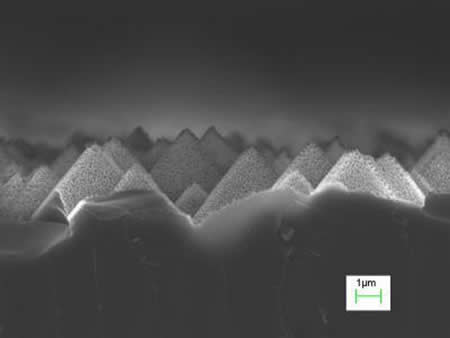Self-cleaning, low-reflectivity Superhydrophobic treatment for photovoltaic cells

The good thing about being intelligent to invent things and to recognize that the world we live in is going into danger is that it brings out options of improvement. Researchers at the Georgia Institute of Technology have developed a surface treatment that boosts the light absorption of silicon photovoltaic cells in two complementary ways. This will help increase absorption both by trapping light in three-dimensional structures and by making the surfaces self-cleaning which will help allow rain or dew to wash away the dust and dirt that can accumulate on photovoltaic arrays and because of this ability it is called Superhydrophobic. They are predicting that this could potentially increase the final efficiency of the cells by as much as two percent with this surface structure.
This treatment even works in no-rain, extremely dry places like the Middle East as the constant sunlight provides ideal conditions for photovoltaic arrays with nighttime dew should provide enough moisture to keep the cells clean. However using the superhydrophobic surface treatment also has fears of mechanical abrasion to the surface which can destroy the superhydrophobicity. This will result in making a large superhydrophobic surface area so that small amounts of damage won’t affect the overall surface and which in turn would be a costly affair.
Source